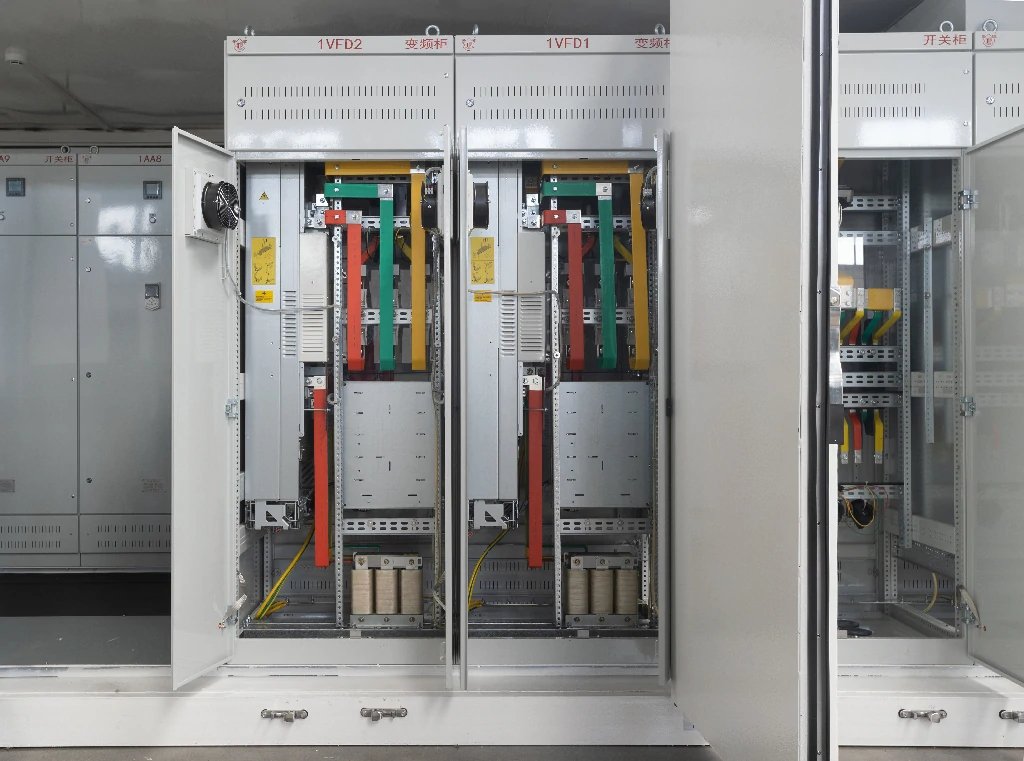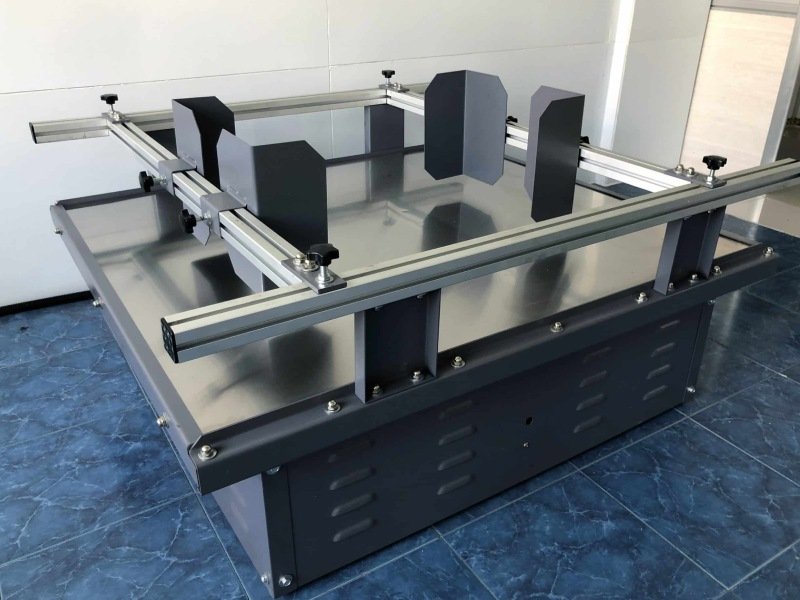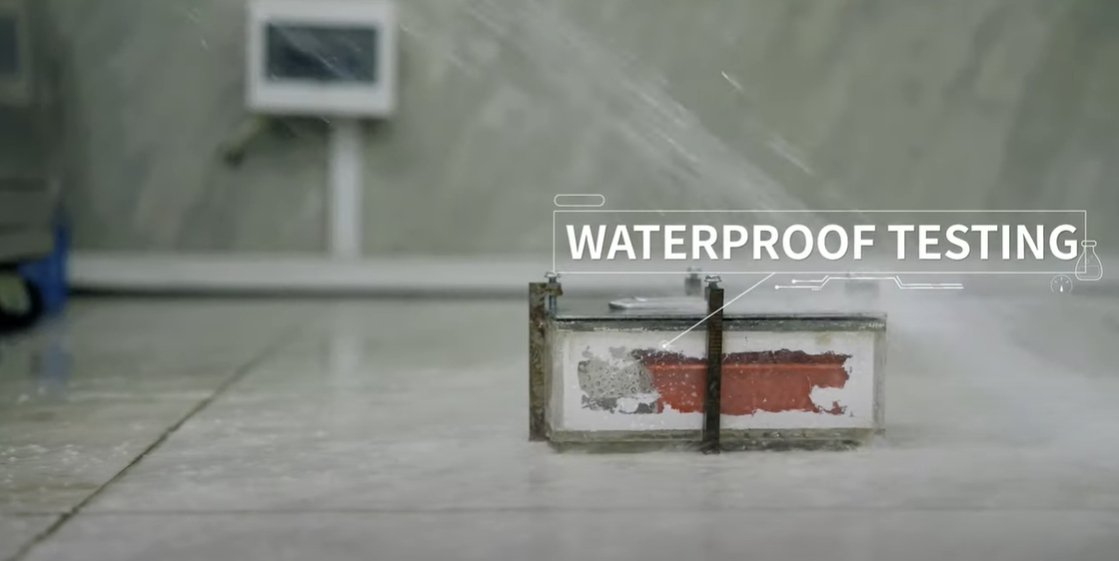Marine and offshore environments present some of the most challenging conditions for electrical equipment. From relentless saltwater exposure to extreme weather and high humidity, these settings demand robust solutions to protect sensitive electrical components. Electrical enclosures, designed to house and safeguard wiring, control panels, and other critical systems, rely heavily on latches to ensure security, accessibility, and environmental protection. This article explores the applications of marine and offshore electrical enclosure latches, delving into their design, materials, functionality, and critical role in various industries. By examining their importance in marine vessels, offshore platforms, and coastal facilities, we aim to highlight why these latches are indispensable for operational safety and reliability.
Understanding Marine and Offshore Electrical Enclosures
Electrical enclosures in marine and offshore settings are specialized housings that protect electrical components from harsh environmental factors. These enclosures are typically built to meet stringent standards, such as those set by the National Electrical Manufacturers Association (NEMA) and the International Electrotechnical Commission (IEC), including NEMA 4X and IP66 ratings, which ensure protection against water ingress, corrosion, and dust. The latches on these enclosures are critical components, providing secure closure while allowing authorized access for maintenance or operation.
Marine enclosures are used on ships, boats, and docking facilities, while offshore enclosures are common on oil and gas platforms, wind farms, and other installations exposed to seawater. Both types must withstand corrosion, vibration, and extreme weather, making the choice of latch type and material a pivotal design consideration. Latches not only secure the enclosure but also contribute to its sealing integrity, preventing moisture and contaminants from compromising the internal components.
The Role of Latches in Electrical Enclosures
Latches serve multiple purposes in marine and offshore electrical enclosures:
- Sicurezza: They prevent unauthorized access to sensitive electrical systems, protecting against tampering or theft.
- Protezione dell'ambiente: Latches ensure a tight seal, often with gaskets, to keep out water, salt, dust, and other contaminants.
- Ease of Access: They allow quick and reliable access for maintenance personnel, often in challenging conditions like rough seas or high winds.
- Durata: Designed to withstand harsh environments, latches maintain functionality over time despite exposure to corrosive elements and mechanical stress.
These functions are particularly critical in marine and offshore applications, where equipment failure can lead to costly downtime, safety hazards, or environmental damage.
Types of Latches Used in Marine and Offshore Enclosures
Several types of latches are employed in marine and offshore electrical enclosures, each suited to specific applications and environmental demands:
Compression Latches
Compression latches are widely used in marine applications due to their ability to create a watertight seal. When engaged, these latches compress a gasket against the enclosure frame, preventing water, dust, and debris from entering. They are ideal for enclosures on ships, boats, and offshore platforms, where submersion or heavy spray is possible. Compression latches are often made from stainless steel or die-cast zinc with corrosion-resistant coatings to withstand saltwater exposure. Their flush-mounted designs reduce noise and vibration, making them suitable for high-traffic areas like engine rooms or deck equipment.
Swing Handle Cam Latches
Swing handle cam latches are popular in offshore platforms and marine equipment enclosures. Their stainless steel construction ensures corrosion resistance, and the swing handle design allows easy operation, even when operators wear gloves or work in rough seas. These latches secure control panels, switchgear cabinets, and storage lockers, protecting sensitive equipment from moisture and unauthorized access. The cam mechanism provides a strong closure, capable of withstanding vibrations and mechanical stress.
Chiusure a scatto
Slam latches offer convenience by allowing doors or panels to be closed with a simple push, making them ideal for applications requiring frequent access. In marine settings, they are used on hatches, storage lockers, and electrical enclosures where quick closure is essential. Stainless steel slam latches with spring-loaded or push-to-close mechanisms ensure a secure seal and are designed to resist corrosion in saltwater environments. Locking variants provide added security for toolboxes and first responder equipment.
Quarter-Turn Latches
Quarter-turn latches are compact and efficient, requiring only a 90-degree turn to lock or unlock. They are commonly used in electrical enclosures for quick access to control panels or wiring. In marine applications, these latches are often made from 316 stainless steel to resist corrosion and are paired with gaskets for IP66-rated sealing. Their simplicity makes them suitable for smaller enclosures or space-constrained environments.
Three-Point Latch Systems
Three-point latch systems are used in larger enclosures, such as freestanding or double-door models, to ensure uniform gasket compression across the door. These systems secure the top, bottom, and middle of the door simultaneously, preventing bowing and maintaining a watertight seal. NEMA 4X-rated three-point latch enclosures are popular in offshore petrochemical plants and wastewater treatment facilities, where robust sealing is critical.
Materials for Marine and Offshore Latches
The harsh marine environment demands materials that resist corrosion, wear, and mechanical stress. Common materials for latches include:
- Stainless Steel (316L and 304L): 316L stainless steel is the gold standard for marine applications due to its high nickel content and molybdenum, which enhance corrosion resistance. It is used for latch bodies in enclosures exposed to saltwater. 304L stainless steel, with higher chromium content, is preferred for hardware like nuts and bolts due to its strength and wear resistance.
- Die-Cast Zinc: Zinc latches with black powder-coated or chrome-plated finishes offer corrosion resistance for less extreme outdoor applications. They are cost-effective but less durable than stainless steel in prolonged saltwater exposure.
- Polycarbonate: Some latches incorporate polycarbonate components for lightweight, non-corrosive applications, particularly in enclosures requiring temporary submersion.
- Aluminum (5052): Lightweight aluminum latches are used in weight-sensitive applications, such as portable marine equipment. Anodizing enhances their corrosion resistance, though they may show pitting over time in saltwater.
The choice of material depends on the enclosure’s location, expected exposure, and operational requirements. For example, stainless steel is preferred for offshore platforms, while aluminum may suffice for coastal docking facilities.
Applications of Latches in Marine and Offshore Settings
Marine and offshore electrical enclosure latches are employed across a wide range of applications, each with unique challenges and requirements. Below, we explore their use in key sectors:
1. Commercial and Recreational Vessels
On ships and boats, electrical enclosures house navigation systems, communication equipment, and engine controls. Latches must secure these enclosures against constant vibration, saltwater spray, and potential submersion. Compression latches and slam latches are common, providing watertight seals and quick access for crew members. For example, stainless steel compression latches are used on deck-mounted control panels, ensuring that moisture does not compromise critical systems. Locking slam latches secure storage lockers containing safety equipment, preventing loss during rough seas.
2. Offshore Oil and Gas Platforms
Offshore platforms operate in some of the harshest environments, with exposure to saltwater, chemicals, and extreme temperatures. Electrical enclosures on these platforms protect instrumentation, control systems, and power distribution equipment. Swing handle cam latches and three-point latch systems are used to secure large enclosures, ensuring that sensitive components remain operational. Stainless steel latches are critical here, as corrosion could lead to equipment failure and costly downtime. These latches also facilitate maintenance in challenging conditions, allowing operators to access panels quickly.
3. Offshore Wind Farms
Renewable energy installations, such as offshore wind turbines, rely on electrical enclosures to house control and monitoring systems. These enclosures face constant exposure to wind, waves, and salt spray. Quarter-turn and compression latches made from 316 stainless steel provide reliable sealing and durability, protecting electronics from corrosion and water ingress. The lightweight nature of some latch designs, such as those incorporating polycarbonate, helps reduce the overall weight of turbine components.
4. Marinas and Coastal Facilities
Docking facilities and marinas use electrical enclosures for shore power distribution, lighting, and security systems. These enclosures must comply with NEC Article 555, which mandates weatherproofing and ground-fault protection to prevent electrical hazards. Compression latches and quarter-turn latches ensure that enclosures remain sealed against rain, salt spray, and humidity. Stainless steel or anodized aluminum latches are preferred for their corrosion resistance in coastal environments.
5. Marine Repair and Storage Facilities
Boatyards and dry stack storage facilities use electrical enclosures to power cranes, hoists, and repair equipment. Latches on these enclosures must withstand outdoor exposure and frequent use. Slam latches and swing handle cam latches are ideal, offering durability and ease of operation. Locking mechanisms are often incorporated to prevent unauthorized access to equipment controls.
6. Aquaculture and Marine Research
In aquaculture farms and marine research stations, electrical enclosures protect monitoring and control systems for water quality, feeding, and data collection. These enclosures are often submerged or exposed to high humidity, requiring latches with IP68 ratings for underwater use. Compression latches with O-rings and gaskets ensure a watertight seal, while stainless steel construction prevents corrosion.
Standards and Compliance
Marine and offshore electrical enclosure latches must adhere to international standards to ensure safety and performance. Key standards include:
- NEMA 4X: Specifies corrosion resistance and protection against water ingress, suitable for marine environments. Enclosures with NEMA 4X latches must withstand 200 hours of salt spray testing.
- IP65/IP66/IP68: These IEC ratings indicate protection against dust and water, with IP68 allowing for continuous submersion.
- NEC Article 555: Governs electrical installations in marinas and docking facilities, requiring weatherproof enclosures and secure latches.
- RoHS and CE: Ensure that latches are free from hazardous substances and meet European safety standards.
Manufacturers like KDM Steel and Sierra Pacific Engineering and Products (SPEP) design latches to meet these standards, ensuring reliability in marine and offshore applications.
Design Considerations for Marine Latches
Designing latches for marine and offshore enclosures involves several considerations:
- Resistenza alla corrosione: Materials must withstand prolonged saltwater exposure without degrading.
- Sealing Integrity: Latches must maintain a tight seal, often with gaskets or O-rings, to achieve high IP or NEMA ratings.
- Facilità d'uso: Latches should be operable in adverse conditions, such as with gloved hands or during rough seas.
- Durata: Frequent use and mechanical stress require robust designs that resist wear.
- Sicurezza: Locking mechanisms may be necessary to prevent unauthorized access, particularly in high-value or safety-critical applications.
Manufacturers often offer customization options, such as specific finishes, sizes, or locking systems, to meet unique project requirements.
Challenges and Solutions
Marine and offshore latches face several challenges, including:
- Corrosion: Saltwater and humidity accelerate corrosion, necessitating high-grade materials like 316 stainless steel or anodized aluminum.
- Vibration: Constant motion on ships and platforms can loosen latches, requiring designs with dampened vibration or secure cam mechanisms.
- Uso frequente: High-access enclosures experience wear, which can be mitigated with durable materials and spring-loaded mechanisms.
- Weight Constraints: Offshore platforms and vessels often prioritize lightweight components, leading to the use of aluminum or polycarbonate latches where appropriate.
Solutions include rigorous material testing, advanced coatings, and innovative latch designs like three-point systems that distribute stress evenly. Regular maintenance, such as cleaning and lubrication, also extends latch longevity.
Future Trends in Marine and Offshore Latches
As marine and offshore industries evolve, so do the requirements for electrical enclosure latches. Emerging trends include:
- Chiusure intelligenti: Integration of electronic locking systems with key switches or RFID for enhanced security and remote monitoring.
- Materiali leggeri: Advances in composite materials may reduce latch weight while maintaining corrosion resistance.
- Sustainability: Manufacturers are exploring eco-friendly coatings and recyclable materials to meet environmental regulations.
- Personalizzazione: Increased demand for bespoke latch designs tailored to specific vessels or platforms.
These innovations aim to improve reliability, reduce maintenance costs, and align with the industry’s push toward automation and sustainability.
Conclusione
Marine and offshore electrical enclosure latches are critical components that ensure the safety, reliability, and longevity of electrical systems in some of the world’s harshest environments. From compression latches on ship control panels to three-point systems on offshore platforms, these latches provide security, environmental protection, and ease of access. By leveraging corrosion-resistant materials like stainless steel and adhering to stringent standards like NEMA 4X and IP66, manufacturers meet the unique challenges of marine and offshore applications. As industries continue to innovate, latches will evolve to incorporate smart technologies and sustainable materials, further enhancing their role in protecting critical infrastructure. For engineers, operators, and facility managers, selecting the right latch is not just a technical decision but a strategic one, ensuring operational success in demanding conditions.







